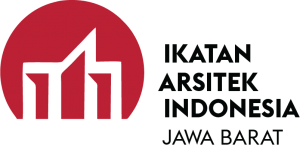Seminar Nasional Arsitektur Pertahanan 2022 - Apa yang Diajarkan oleh Pandemi Covid-19 serta Hikmah yang Bisa Kita Petik dari Arsitektur dan Permukiman Tradisional?
Sari
ABSTRAK
Kota merupakan salah satu karya manusia yang paling spekatakuler. Produk fisik ini terus bertransformasi, dibentuk dan membentuk manusia yang menghuninya. Perubahan formasi fisik, merupakan keniscayaan sebagai respons dari perubahan dan dinamika penduduk yang menghuni kota. Transformasi sekaligus menjadi bukti ketahanan kota terhadap berbagai macam kejadian yang dialaminya selama proses pertumbuhannya. Dalam tulisan ini, reaksi dan perubahan kota dan penduduknya terhadap pandemic covid-19 dievaluasi. Pada tahap awal, akan dibahas berbagai respons arsitektur dan desain kota dalam menghadapi pandemic dari berbagai lietrature. Selanjutnya, saya akan mengevaluasi pengalaman personal saat didiagnosis sebagai pasien yang terpapar virus yang pertamakali dideteksi di Kota Wuhan China ini. Pada tahap ketiga, evaluasi dilanjutkan dengan perkembangan kota sebelum masa hingga menjelang pandemic. Denpasar dijadikan sebagai contoh kasus. Dari sana, refleksi terhadap desain kota dan arsitektur dilakukan untuk melihat komponen-komponen permukiman yang membantu atau yang menghambat penyebaran virus. Pada tahap terakhir, akan dianalisis unsur-unsur yang mengalami perubahan selama masa pandemic. Hasil analisis menunjukkan bahwa merebaknya virus yang telah menimbulkan banyak kekacauan ini mendorong, bahkan memaksa, banyak aktivitas manusia harus disesuaikan ulang. Arsitektur dan permukiman tradisional memberi contoh tentang bentuk fisik yang adaptif terhadap berbagai bencana. Meski demikian, bukan berarti kita harus kembali ke masa lalu karena kehidupan berlangsung terus ke masa depan. Kemandirian dalam beberapa hal terutama pemenuhan kebutuhan dasar, pemanfaatan teknologi untuk membuat manusia saling terkoneksi satu sama lain dan dengan lingkungan fisiknya, serta aksesibilitas terhadap fasilitas kesehatan menjadi kata kunci penting di samping perbaikan kualitas lingkungan kota secara umum..
Kata kunci: ketahanan kota, pandemic covid-19, tranformasi arsitektu.
ABSTRACT
City is one of the most spectacular human works. This physical product continues to transform, shaped by and shape its inhabitants. City transformation is a necessity as a response to changes and the dynamics of the people who inhabit it. The transformation is also a testament to the city's resilience to the various events it experienced during its lifespan. In this paper, the reactions and changes of the city and its inhabitants to the COVID-19 pandemic are evaluated. At the initial stage, various literature that discussed architecture and urban design responses to the pandemic were examined. Next, I will evaluate my personal experience when I was diagnosed as a patient exposed to the virus. In the third stage, the evaluation is continued with the development of the city before the period until the time of the pandemic. Denpasar is selected as a case in point. From there, reflection on urban design and architecture is carried out to see the components of settlements that help or hinder the spread of the virus. In the last stage, the elements that have changed during the pandemic will be analysed. The results of the analysis show that the outbreak of the virus that has caused so much chaos has prompted, even forced, many human activities to be readjusted. Traditional architecture and settlements provide examples of physical forms that are adaptive to various disasters. However, that does not mean we have to go back to the past because life continues into the future. The ability of a city to fulfil its own needs in several respects, especially the fulfilment of basic needs, the use of technology to make people connected to each other and with their physical settings, and accessibility to health facilities are important keywords in addition to improving the quality of the urban environment in general.
Keywords: architectural transformation, covid-19 pandemic, urban resilience
Teks Lengkap:
PDFReferensi
Berggren, C. C. Urban Density and Sustainability. Retrieved from Smart Cities Dive: https://www.smartcitiesdive.com/ex/sustainablecitiescollective/urban-density-and-sustainability/241696/ [Accessed: 4-Jul-2022]
Stone, L., Petrella, L., Berg, R. V., Terada, Y., Torner, J., & Ang, J. C. Urban Planning Responses in post-crisis contexts. Nairobi: United Nations Human Settlements Programme. 2020.
Rowe, D. COVID-19 showed me that my local area was designed for cars, rather than people. Journal of Urban Design and Mental Health, 2020. 6(14).
Tampe, T. Potential impacts of COVID-19 in urban slums: addressing challenges to protect the world’s most vulnerable. Cities and Health, 2020, S76-S79.
Hamidi, S., Sabouri, S., & Ewing, R. Does density aggravate the COVID-19 pandemic? Early findings and lessons for planners. Journal of the American Planning, 2020. Pp 495-509.
Andrade, R. d. The Brazilian slums hiring their own doctors to fight covid-19. BMJ, 369. 2020. doi:https://doi.org/10.1136/bmj.m1597
Patel, A., & Shah, P. Rethinking Slums, cities, and urban planning: lessons from the COVID-19 pandemic. Cities and Health, 2021. S145-S147.
Chen, M. A. (2020, May 5). Vegetables on Wheels in Ahmedabad, India: SEWA partners with municipality to ensure food access during lockdown. Retrieved from wiego.org: https://www.wiego.org/blog/vegetables-wheels-ahmedabad-india-sewa-partners-municipality-ensure-food-access-during. [Accessed: 5-May-2020]
Nupur, P. Cities in crisis: examining the pandemic through urban planning and state capacity. India Review, 2021. 20(2), 229-245. doi:https://doi.org/10.1080/14736489.2021.1895567
Chayka, K.). How the Coronavirus Will Reshape Architecture. Retrieved from The New Yorker: https://www.newyorker.com/culture/dept-of-design/how-the-coronavirus-will-reshape-architecture [Accessed: 17-Jun-2020]
Giacobbe, A. How the COVID-19 Pandemic Will Change the Built Environment. Retrieved from Architectural Digest: https://www.architecturaldigest.com/story/covid-19-design [Accessed: 18-Mar-2020]
Tillema, H. F. On the question of living conditions in Kromo's vast country. In H. F. Tillema, Kromoblanda (p. 631). The Hague: S-Gravenhage : H. Uden Masman. 1922.
Quintero, N. Design and contagion: well-being and the physical environment during the COVID-19 pandemic. Journal of Urban Design and Mental Health, 2020. 6(2).
Amran, M., Makul, N., Fediuk, R., Borovkov, A., Ali, M., & Zeyad, A. M. A Review on Building Design as a Biomedical System for Preventing COVID-19 Pandemic . Buildings. 2022.
Saeed, D. M., Elkhatib, W. F., & Selim, A. M. Architecturally safe and healthy classrooms: eco-medical concept to achieve sustainability in light of COVID-19 global pandemic. Journal of Asian Architecture and Building Engineering, 2021, 1-16.
Navaratnam, S., Nguyen, K., Selvaranjan, K., Zhang, G., Mendis, P., & Aye, L. Designing post-COVID-19 buildings: approaches for achieving healthy buildings. Buildings. 2022. doi:https:// doi.org/10.3390/buildings12010074
Elrayies, G. M. Prophylactic Architecture: Formulating the Concept of Pandemicâ€Resilient Homes. Buildings. 2022. doi:https://doi.org/10.3390/ buildings12070927
Hölscher, K., & Frantzeskaki, N. Perspectives on urban transformation research: transformations in, of, and by cities. Urban Transformations, 2021. 3(2). doi:https://doi.org/10.1186/s42854-021-00019-z
Buyan, K., Walubwa, J., Mukwaya, P., Lwasa, S., & Owuor, S. City residents, scientists and policy-makers: power in co-producing knowledge. Urban Transformations, 3(1). 2021. doi:https://doi.org/10.1186/s42854-021-00020-6
Karvonen, A., Cvetkovic, V., Herman, P., Johansson, K., & Kjellström, H. The ‘New Urban Science’: towards the interdisciplinary and transdisciplinary pursuit of sustainable transformations. Urban Transformations, 2021. 3(9). doi:https://doi.org/10.1186/s42854-021-00028-y
Korn, V. E. Het Adatrecht van Bali. Gravenhage: G. Naeff. 1932.
DOI: https://doi.org/10.26760/terracotta.v4i1.8139
Refbacks
- Saat ini tidak ada refbacks.
ISSN elektronik 2716-4667
Diterbitkan oleh :
Program Studi Arsitektur, Institut Teknologi Nasional Bandung
Alamat : Gedung 17 Lantai 1 Jl. PHH. Mustofa 23 Bandung 40124
Kontak : Tel. 7272215 (ext. 151) Fax. 7202892
Email : terracotta@itenas.ac.id
Terindeks :
Didukung Oleh :
1.png)

Kerja Sama :
Jurnal ini terlisensi oleh Creative Commons Attribution-ShareAlike 4.0 International License.






